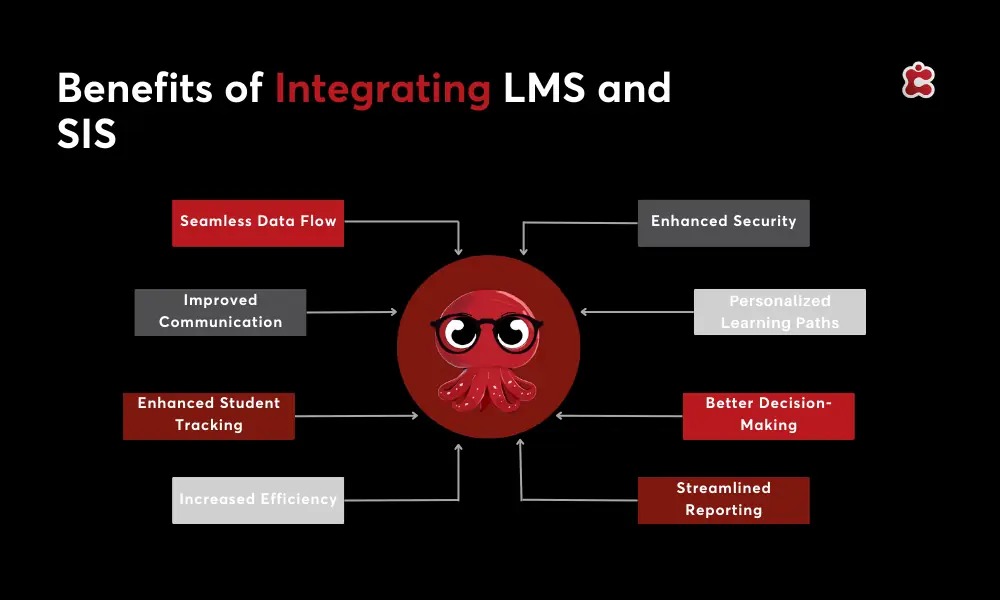Lithuania’s higher education is changing. With 36 institutions (17 universities and 19 colleges) serving over 100,000 students, the country has long prioritised academic excellence. However, challenges like declining enrollment and the need for more efficient systems have prompted a reevaluation of traditional approaches.
The good news? Change is already happening. Lithuania is embracing digital transformation in a big way. From national initiatives to EU-backed projects, there’s a clear drive to modernise how universities operate and support students.
And that’s where integrated software comes in. Instead of jumping between disconnected platforms and spreadsheets, universities can bring everything together in one place. Whether it’s admissions, learning management, or student records, integration means smoother processes and less admin stress. If you’re part of Lithuania’s academic community and ready to build a more connected, future-ready institution, now’s the perfect time to see what integrated software can really do.

What is Integrated Educational Software?
Integrated educational software is all about creating a connected digital environment where everything works together. Instead of juggling separate systems for things like admissions, class schedules, grading, and communication, integration brings all these tools into one unified platform. It’s a smarter, more efficient way to manage the day-to-day operations of a school or university.
When software tools work in isolation, it often leads to duplication, data silos, and frustration for both staff and students. But with an integrated system, information flows seamlessly between departments, saving time and reducing errors. Admins can make faster decisions, teachers get clearer insights, and students enjoy a smoother learning experience.
Core Systems That Can Be Integrated
When we talk about integration, we’re talking about connecting the tools you already use—so they work better together and make life easier for everyone on campus. Here’s a look at the core systems that can (and should) be integrated:
- School Management Systems (SMS)
These platforms handle the day-to-day running of the institution—scheduling, class management, attendance, behaviour tracking, and more. - Student Information Systems (SIS)
Your SIS is the heart of your data. It manages admissions, student records, grades, transcripts, and academic progress. - Learning Management Systems (LMS)
The go-to for delivering online courses, managing assignments, sharing resources, and tracking learning outcomes. - Customer Relationship Management (CRM) tools
Great for managing communications with prospective and current students, alumni, and other stakeholders. - Financial and accounting software
Integrating finance tools means real-time updates on tuition fees, invoices, and payments—no more chasing spreadsheets. - Library systems, dormitory tools, and more
Integration can even extend to accommodation and learning resource platforms.
Syncing these tools helps avoid information silos, reduces admin time, and gives every department access to accurate, up-to-date data—all in one place.
Streamlined Administration and Operations
Ask any university administrator, and they’ll tell you—manual processes can be a real time drain. By automating key administrative tasks (like enrolment, class scheduling, grade reporting, and attendance tracking) institutions can free up hours of staff time every week. No more double data entry or sorting through disconnected systems. Instead, everything lives in one place, updated in real time and accessible to the people who need it.
Centralising data management also means fewer errors and better collaboration between departments. Finance, admissions, and academic staff can all work from the same reliable source of information.
Classter, for example, offers a complete suite of tools designed to bring admin tasks under one roof. Lithuanian institutions using Classter are already seeing smoother operations and happier teams. When you streamline the back office, everyone wins.
Enhanced Communication Across Stakeholders
Good communication is the glue that holds a university community together. But when messages are scattered across emails, paper notices, and separate platforms, things can easily fall through the cracks. Integrated software helps bring everyone—faculty, students, admin staff, and even parents—onto the same page.
With features like real-time notifications, shared calendars, and built-in messaging tools, information reaches the right people instantly. Whether it’s a schedule change, an assignment deadline, or a campus announcement, everyone stays informed without needing to scroll through endless emails.
This kind of centralised communication not only reduces admin overload, it boosts engagement. Lecturers can share feedback faster, students know where they stand, and staff can collaborate more easily. Some systems even allow parents to stay in the loop about academic progress and attendance.
Support for Hybrid and Online Learning
As universities across Lithuania continue to adapt to remote and blended learning models, having the right tech in place is more important than ever.
By connecting with Learning Management Systems (LMS), institutions can manage course content, assessments, and student progress all in one place. This makes it easy to support hybrid and online education. Lecturers can upload materials, host discussions, and track engagement, while students enjoy a consistent learning experience whether they’re in the classroom or at home.
It also means less back-and-forth between systems. Grades, attendance, and communications sync automatically, giving a full picture of student activity across both physical and virtual spaces.
Classter and Lithuania’s Digital Education Strategy
Classter is already making waves across Europe by helping educational institutions break free from disconnected systems and move towards full digital integration. It brings everything under one roof—from student records and course management to communication and financials—so universities can finally work with one source of truth.
Designed with flexibility in mind, Classter supports seamless integration with popular tools like Microsoft 365, Moodle, and more. It’s already been adopted by universities in Greece, Cyprus, and beyond, where institutions have seen huge improvements in efficiency, transparency, and the overall student experience.
Ready to see how Classter could support your institution’s digital transformation? Let’s talk. Book a personalised demo today.
FAQ’s
It streamlines administration, enhances data accuracy, boosts communication, and supports digital learning, helping institutions modernise efficiently.
Most modern school management platforms, including those used in the EU, are built to meet GDPR standards and include features like user access controls, encryption, and secure data storage.
Classter is a cloud-based platform that combines SIS, LMS, and CRM capabilities in one. It helps universities manage student data, learning processes, communication, and operations in a unified environment.

